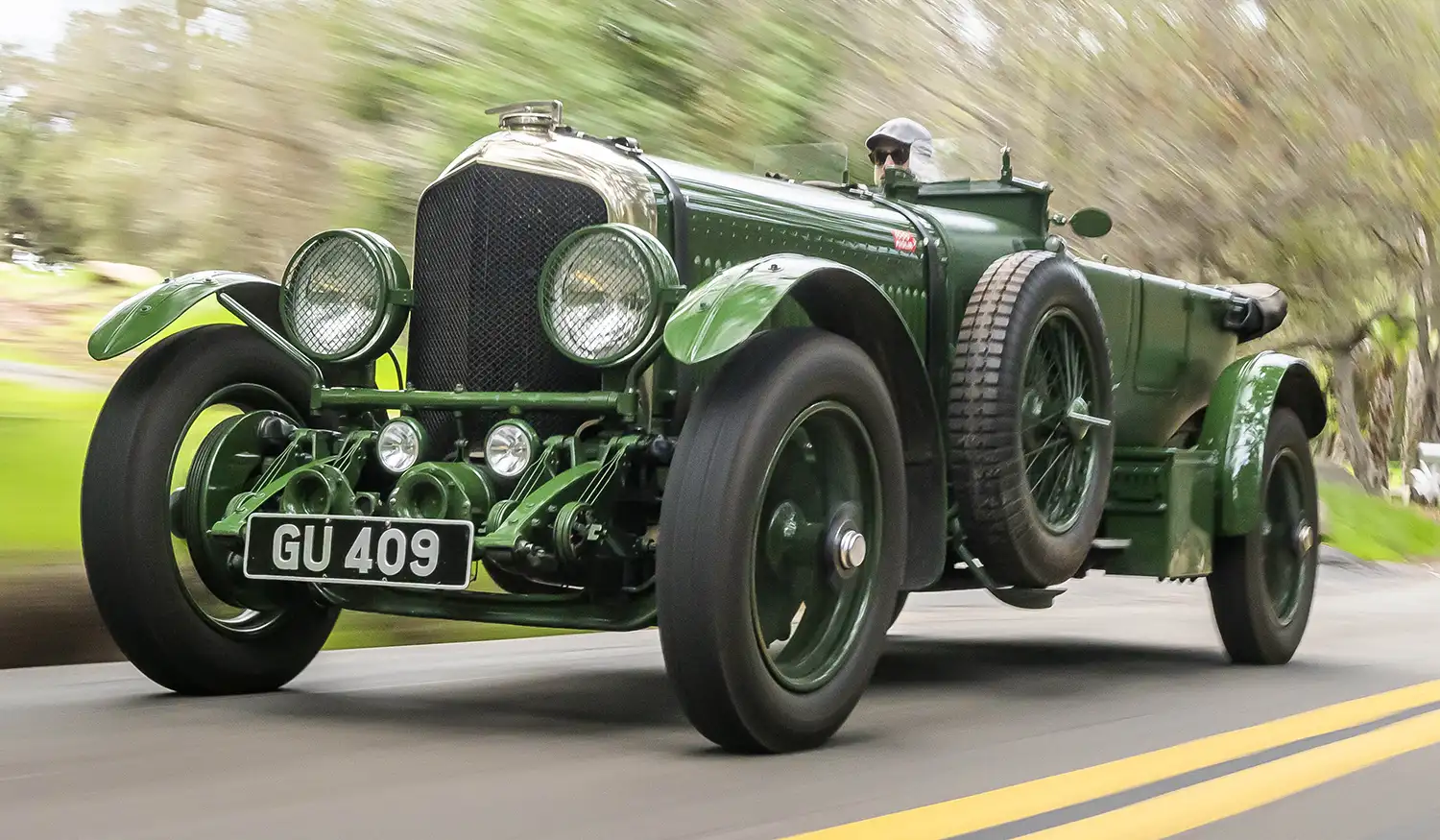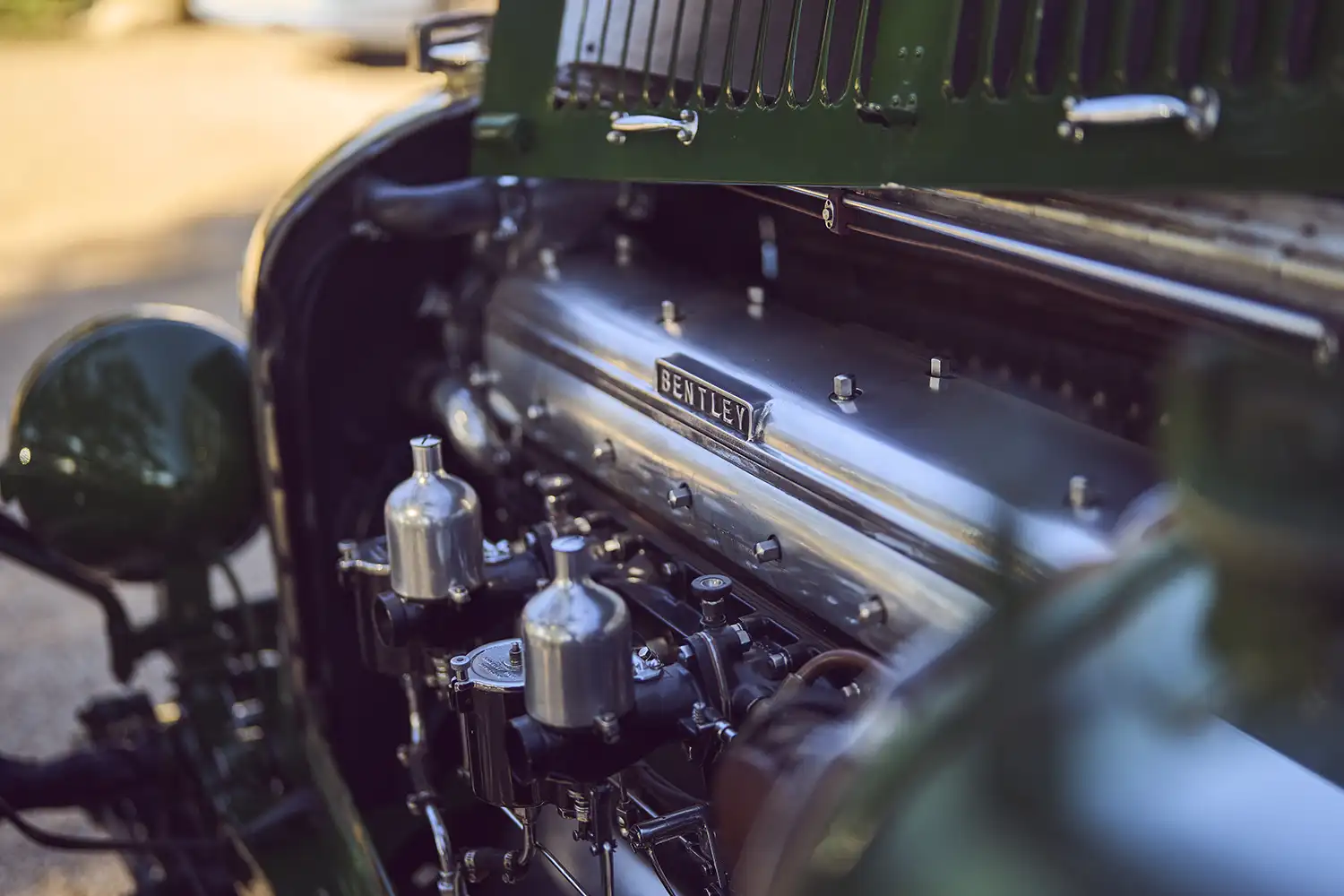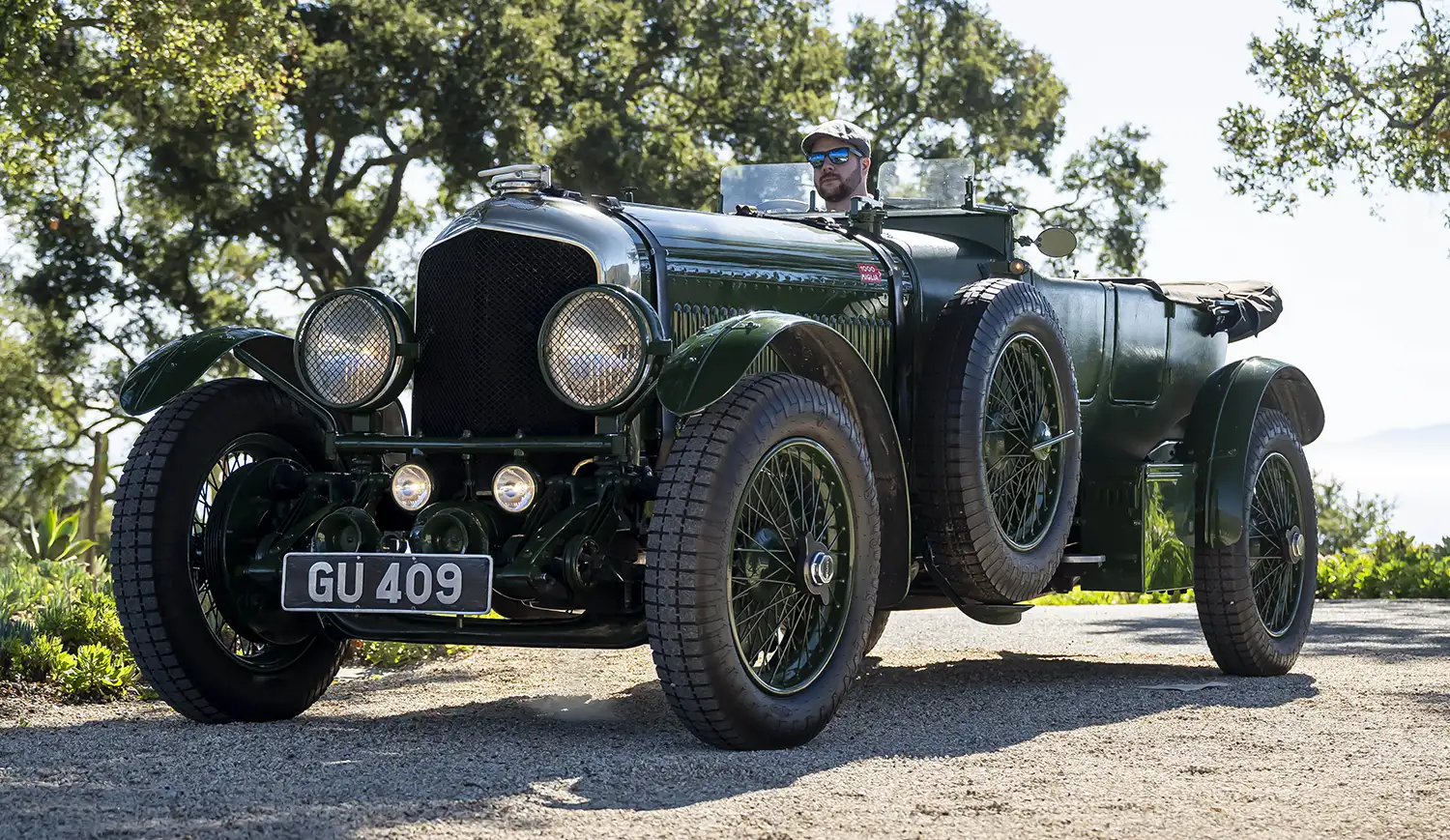
The 1929 Bentley Speed Six, chassis number GU 409, is a remarkable example of one of Bentley’s most iconic pre-war models. Known for its exceptional performance and racing pedigree, the Speed Six is a high-performance version of the 6½ Litre Bentley and holds a revered place in automotive history. With its legendary victories at the 24 Hours of Le Mans in 1929 and 1930, the Speed Six became a symbol of Bentley’s engineering prowess and racing dominance.
The Genesis of the 6½ Litre
W.O. Bentley, the founder of Bentley Motors, believed in the philosophy that “there’s no replacement for displacement.” While others, like Sir Henry ‘Tim’ Birkin, were experimenting with supercharging, Bentley focused on increasing engine capacity to boost power. This approach led to the creation of the 6½ Litre engine, a massive straight-six with a bore of 100 mm and a stroke of 140 mm, resulting in a displacement of nearly 6.6 liters.

In its base form, the 6½ Litre engine was equipped with a single Smiths five-jet carburettor, twin magnetos, and a compression ratio of 4.4:1, delivering 147 bhp at 3,500 rpm. A total of 362 units were produced at Bentley’s Cricklewood factory in north London, each built on varying chassis lengths tailored to the bespoke bodywork preferences of their owners.
The Speed Six: A Racing Thoroughbred
Introduced in 1928, the Speed Six was the more sporting iteration of the 6½ Litre, engineered for those who demanded higher performance. The Speed Six’s engine was modified with twin SU carburettors, a higher compression ratio, and a high-performance camshaft, increasing its output to 180 bhp. The Speed Six was available with three different wheelbases: 138 inches (3,505 mm), 140.5 inches (3,569 mm), and 152.5 inches (3,874 mm), with the short chassis being the most popular among buyers.

The racing version of the Speed Six was further enhanced, featuring a wheelbase of 132 inches (3,353 mm) and an engine with a 6.1:1 compression ratio, producing 200 bhp. This racing variant secured Bentley’s dominance at Le Mans, with back-to-back victories in 1929 and 1930, solidifying the Speed Six’s status as one of the greatest racing Bentleys ever built.
GU 409: A Heritage Collection Gem
The Speed Six GU 409 joined Bentley’s prestigious Heritage Collection in 2021, completing the marque’s representation of pre-war models. Originally built for W.F. Watson, GU 409 was delivered in September 1929, fitted with a Weymann saloon body by Victor Broom. In 2005, the car underwent a meticulous restoration, during which it was converted to Team Car specification, replicating the Speed Sixes that raced at Le Mans.

Finished in the iconic British Racing Green with a black interior, GU 409 is a striking example of Bentley’s pre-war engineering excellence. The car is powered by a 6,597 cc straight-six engine with a 5.3:1 compression ratio, an overhead camshaft, and four valves per cylinder. This formidable powerplant produces 180 bhp at 3,500 rpm, mated to a 4-speed, non-synchromesh D-Type gearbox.
Performance and Legacy
With its short 138-inch (3,505 mm) chassis, GU 409 is a nimble yet powerful machine, capable of reaching a top speed of 119 mph—a remarkable feat for its time. The restoration to Team Car specification not only preserved its racing heritage but also ensured that GU 409 remains in excellent condition, ready to showcase its historical significance at events and exhibitions.

The 1929 Bentley Speed Six GU 409 is more than just a car; it is a living piece of automotive history. As a member of Bentley’s Heritage Collection, it represents the pinnacle of pre-war racing engineering and continues to inspire awe and admiration among enthusiasts and collectors alike. With its storied past and impeccable restoration, GU 409 is a fitting tribute to the legacy of Bentley and its indomitable spirit on the racetrack.
Source: Bentley
This Article use tools from Chatgpt






